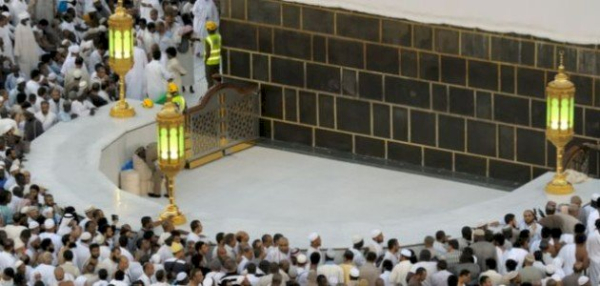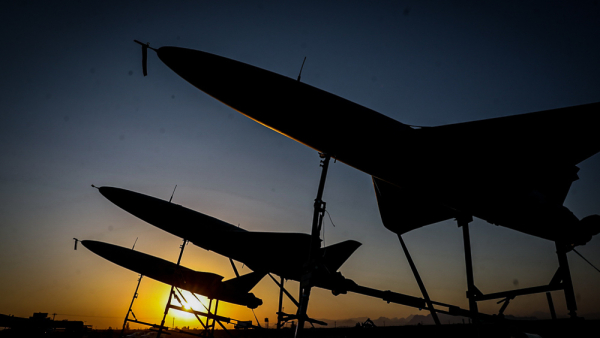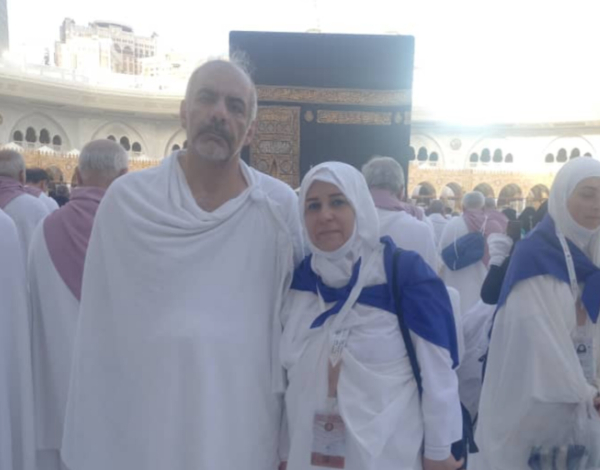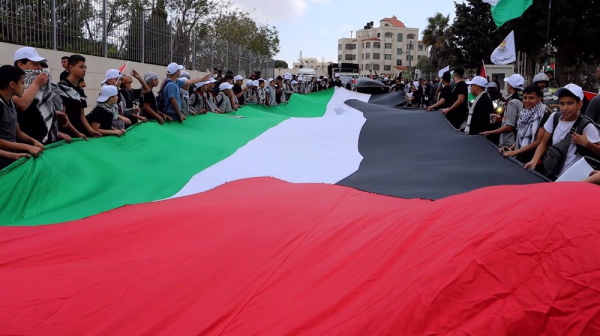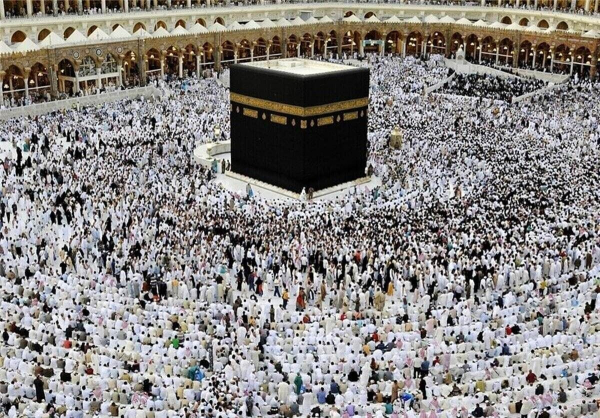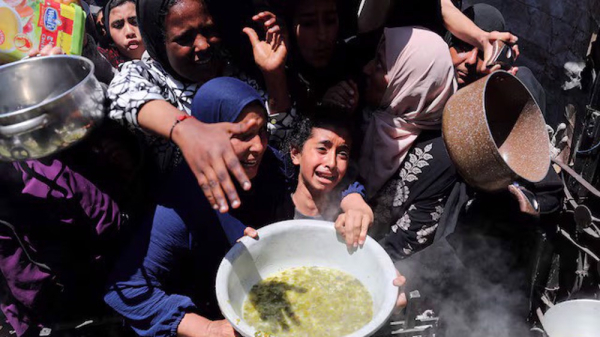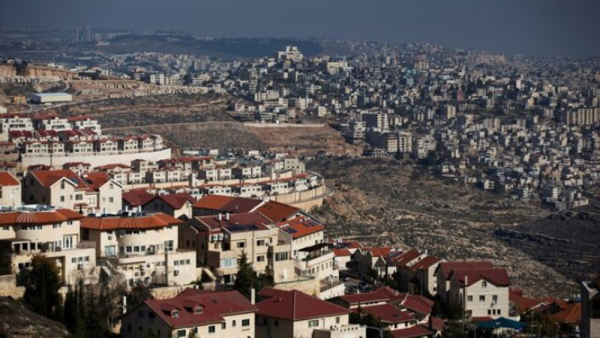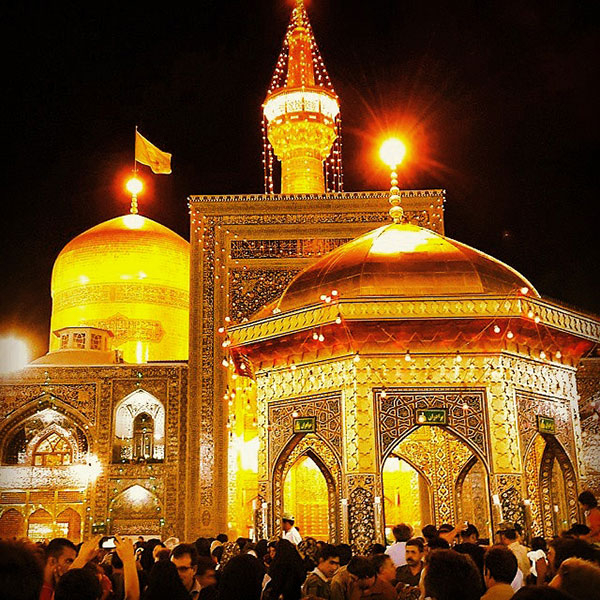zarezadeh
Hijr Ismail
Hijr Ismail is a space between the Kaaba and a semicircular wall about 10 meters wide that extends from the Iraqi to the Syrian corner.
It is a wall with a height of 1.30 meters that is arched and is called Hijr Ismail.
After Prophet Abraham (PBUH) and Hajar and their infant son Hazrat Ismail (PBUH) arrived in the valley of Mecca, they settled in the current location of the Hijr with the guidance of Gabriel. Then Hajar and Ismail, along with their sheep, settled in this place and in a canopy that they built with tree wood. Both Hajar and Ismail were buried in this place after their death.
Hijr Ismail has been respected and sanctified since pre-Islamic times.
The Prophet (PBUH) also sat in Hijr Ismail after his mission and, in addition to praying and reciting the Quran, answered people's questions.
Factbox: Trump’s off-the-cuff claims about ‘water crisis’ in Iran hold no water
By Ivan Kesic
Speaking at the US-Saudi Investment Forum in Riyadh on Wednesday, US President Donald Trump launched a scathing attack on Iran, drawing on a familiar mix of baseless claims and inflammatory comparisons that align with longstanding American biases and propaganda.
Trump echoed deeply prejudiced remarks about Iran, primarily focusing on what he called a water crisis, mismanagement of natural resources, and systemic corruption.
However, these claims were riddled with inaccuracies, drawing on entrenched myths and biases perpetuated by anti-Iranian factions in the West, including high-ranking officials.
Trump's absurd claims
In front of a receptive audience in the Saudi capital, Trump contrasted the infrastructural achievements of Persian Gulf states with what he described as Iran’s decay.
"While you have built the world's tallest skyscrapers in Jeddah and Dubai, Tehran's historical monuments have been collapsing and turning into rubble and dust since 1979," he remarked.
Similarly, he contrasted Saudi Arabia’s achievements in transforming deserts into fertile land with Iran’s situation, claiming that the reverse process is taking place there.
"While your skill has turned dry deserts into fertile farmland, Iran’s leaders have managed to turn green farmland into dry deserts as their corrupt water mafia causes droughts and empty river beds," he hastened to add.
He attributed Iran’s environmental issues, including droughts and desertification, to corruption and mismanagement by its leadership, and to what he called a "water mafia."
Broadening his tirade, Trump referenced Iran's “water crisis” as part of a larger narrative of failure, with claims that Iran's leadership is spending financial resources on foreign financing of the Axis of Resistance.
"The greatest destructive force in the Middle East is Iran. Iran is causing destruction and devastation in Yemen, Iraq, Syria, Lebanon, and other countries," he claimed.
Trump’s remarks formed part of a wider “maximum pressure” strategy to mount pressure on Iran amid ongoing indirect nuclear talks mediated by Oman.
While he has offered an "olive branch" for a "new and better path," he has also foolhardily spoken of "massive maximum pressure" and zero oil exports if diplomacy fails.
Iranian response
Iran's Foreign Minister Abbas Araghchi dismissed Trump’s remarks about Iran's progress and foreign policy, citing decades of US sanctions as the cause of internal issues and accusing him of whitewashing Israeli genocidal crimes.
Araghchi said what Trump "stated about the desire of the regional countries to enjoy a path of progress and prosperity is, in fact, the same path that the Iranian people chose with their revolution and took it to have an independent, democratic, free, prosperous, and advanced country."
Araghchi touched on Trump's renewed threat "to inflict massive maximum pressure" on Iran and portraying it as a "source of insecurity" in the region.
"The US President has ignored all of Israeli crimes in the region and is seeking to portray Iran as a threat; this is pure deception and a reversal of the source of threats. Which regime has killed 60,000 people in Gaza?" he asked.
"Who has caused this much destruction in Gaza? Which regime attacks the areas surrounding Palestine, including Lebanon, Syria, and Yemen? The extent of the occupation carried out by the Zionist regime in Syria in recent months is greater than the entire area of Gaza," he added.
The Zionist regime has placed a nation in Gaza under economic siege, Araghchi reminded,
“All these issues are ignored, and at the same time, they try to portray Iran as a threat to the region so that the main menace is forgotten, but they will not succeed in this path either.”
Well-known propaganda methods
Trump's statements were greeted enthusiastically on social media by various anti-Iran rabble-rousers who have been spreading similar canards for years, glorifying the overthrown dictatorship and blaming the Iranian government for every issue, including natural disasters.
Incoherent analogies with selective, unrepresentative photographs or distorted data have long been a favorite propaganda method of Zionists and their brothers in arms, the monarchists and members of the MKO terror cult, as well as the corporate Western media.
For example, during an interview with the late Iranian President Ebrahim Raeisi in September 2023, CNN journalist Fareed Zakaria presented him with a false contrast between the buildings of downtown Tel Aviv and the dilapidated suburbs of Tehran, suggesting that the Iranian authorities allegedly do not care about their population.
Zakaria also claimed in his questions that there is a "lack of development" in Iran, that the country is isolated, and that it "looks backward" compared to decades ago.
The former Iranian president’s responses were incisive and informative that debunking the myths perpetrated by the American leaders and their media.
“Why do you in the United States impede the dissemination of truth and not let it reach people? Why do you slap sanctions against news agencies? Why do you enforce bans on many youth networks in different parts of the world? Why do you prevent the echo of the voice of Iran and others and block it from reaching other people?” Raieisi asked Zakaria.
The manipulative images used by CNN to prove its theory dated back to March 2008, were clicked by Iranian photographer Behrouz Mehri, and showed the undeveloped suburban neighborhood of Ghaleh Hassan Khan with buildings built before the revolution.
Just a year later, in 2009, the neighborhood was razed to the ground and the area became a new city, Shahr-e Qods, witnessing major housing redevelopment with modern infrastructure.
Despite the modern availability of thousands of online photos from the Iranian capital, CNN selectively took outdated and irrelevant photos, with the obvious intention of misleading its audience with a false perception of Iran's "backwardness."
Fact-checking Trump's construction claims
The claims made by Trump relied on the same misleading contrast, using selective and distorted examples—on one side, the striking super-tall skyscrapers of Saudi Arabia and the UAE, and on the other, a false narrative of the decay of Tehran’s historical monuments.
The emphasis on 1979 romanticizes a period when Iran was ruled by an absolute monarchy and functioned as an American client state, portraying it as an era of supposed progress.
While the towering structures in Jeddah and Dubai are undeniably impressive, they offer little insight into genuine national development.
These projects were designed by foreign architects, constructed by international firms using imported materials and technologies, and often built by migrant labor. Their funding largely depends on foreign currency earned from oil exports, facilitated by foreign technology – a model that closely mirrors the dynamics of pre-revolutionary Iran.
In contrast, today’s Iran and particularly Tehran sets itself apart from these cities, as well as from other major Asian metropolises, including Beijing, by building its landmark structures such as towers, skyscrapers, and stadiums through domestic architects, local firms, homegrown materials, and Iranian labor.
This reflects a fundamentally different model of development—one grounded in national capacity and self-reliance.
Iran has not only avoided degradation or stagnation over the past 50 years but is an example of a country that has achieved remarkable progress in infrastructure development, largely through self-sufficiency.
In 1979, Iran was predominantly rural, with the majority of its population residing outside urban areas. By 2023, the urban population had surged to 77.26 percent, significantly surpassing the global average of 61.36 percent.
This transformation was propelled by comprehensive infrastructure development, industrialization, and population growth, culminating in the establishment of over 1,300 cities, more than triple the number before the 1979 revolution.
The construction sector experienced a profound shift in materials and methods in this period.
Prior to 1979, fewer than 25 percent of homes were built with durable materials like steel and concrete, while approximately two-thirds were constructed using perishable materials such as mud bricks, wood, and straw.
Despite the challenges posed by the Iran-Iraq War, the early post-revolution years saw the proportion of durable housing double, and the use of non-durable materials halve.
Between 1990 and 2010, the prevalence of unreinforced masonry buildings plummeted from 90 percent to 23 percent, while the share of steel and concrete structures soared from 3 percent to 74 percent.
By the 2011 census, Iran had 20 million housing units, with an astounding 90 percent constructed after the revolution, compared to a mere 10 percent under the Pahlavi regime.
Contrary to claims about the deterioration of Iran's historical monuments, the Pahlavi regime, which was backed by the West, largely neglected the preservation of Qajar-era buildings, leading to their decay or deliberate destruction in the name of modernization.
In contrast, contemporary Iran has made significant strides in safeguarding its architectural heritage. Thousands of buildings from both monarchical periods are now listed on the national register, including palaces of deposed monarchs and mansions of former elites.
Many of these structures have undergone meticulous restoration, such as the Qajar city gates in Tehran, which were destroyed during the early Pahlavi era.
Fact-Checking Trump's Water Claims
Trump's assertion that Iran has transformed its "green farmlands into dry deserts" is an exaggeration that overlooks the facts and reflects a double standard when compared to similar issues in the United States.
Once again, the US president employed an incoherent analogy, citing Saudi Arabia as a contrasting and positive example of turning desert into fertile soil.
While Saudi Arabia has indeed made progress in irrigation and water supply, thanks to foreign knowledge, companies, and technology, their results are actually below the level of Iran.
Most of Iran's territory lies in hot, dry zones and, like much of the world, faces water issues due to climate change, droughts, overexploitation, and foreign policies (including disputes with Afghanistan), but these challenges are far from catastrophic.
According to relevant international data, Iran uses 1,110 cubic meters of water per capita per year, ranking twelfth in the world, well ahead of Saudi Arabia (747) and slightly below the US (1,340).
Iran's percentage of access to urban and rural drinking water is 96.1 and 87.2 percent, respectively, ranking 19th and 9th among countries worldwide.
At the beginning of the Islamic Revolution, urban access to safe, hygienic, and sustainable water was 74.6 percent, which increased to 99.87 percent at the beginning of the 13th government in 2021. Also, only 12 percent of the country's rural population had access to drinking water in 1979, but with sustained efforts, this rate rose to more than 85 percent.
According to data from the Food and Agriculture Organization of the United Nations (FAO), Iran irrigates 88,478 square kilometers of land, ranking fifth in the world, after India, China, the USA, and Pakistan.
This ranking is even more remarkable considering that these four countries possess huge rivers with abundant water, whereas Iran's largest river, the Karun, has a flow of only 575 cubic meters per second.
Furthermore, Iran is unique among ancient civilizations in that it did not emerge in the valleys of large rivers, but rather was built upon the ancient innovation of underground irrigation canals known as qanats.
Sophisticated irrigation and water supply projects continue to this day, including a multibillion-dollar initiative to transfer 2.4 cubic kilometers of desalinated water from the Indian Ocean into the Iranian interior, all the way to Mashhad.
The results of Iranian irrigation are also evident in agricultural production data, as the country now ranks among the world's top ten producers of most fruits and vegetables.
Since the revolution, Iran has also gained recognition as one of the largest dam builders in the world, alongside China and Turkey, with hundreds of projects across the country.
The dams have been the subject of bizarre, politicized accusations of being "useless," yet during recent torrential floods, they proved effective by filling to capacity and saving thousands of lives in downstream settlements.
In addition to irrigation, Iran has achieved success in afforestation, with forested areas increasing every year. Iran's forests expanded by 15% in the first 20 years of this century and are now comparable in size to those of Germany.
On the other hand, recent Saudi irrigation has relied on fossil aquifers, which have largely been depleted, resulting in the shutdown of numerous irrigation project.
The gloomy picture in the US
On the other hand, when we analyze the situation in the United States, reports suggest that the country continues to grapple with a multifaceted water crisis, defined by infrastructure failures, contamination and disparities.
According to the Environmental Protection Agency (EPA), the US loses approximately 2.1 trillion gallons of drinking water on an annual basis due to leaks and inefficiencies in its 2.2 million miles of pipes, which shows the aging water infrastructure in the country.
Biden administration had pumped $3 billion into replacing these damaged pipes but experts believe it’s not enough, as US taxpayers money mostly goes to the Israeli regime and Ukraine.
There are many reasons across the US that are experiencing acute water shortage while many are forced to consume contaminated water. In Mississippi, for example, reports say residents have little access to safe drinking water due to flooding, aging infrastructure, and inadequate maintenance.
Similarly, in the Virgin Islands, one district had to declare state of emergency in late 2023 after high and dangerous level of lead and copper were found in the tap water, putting health of people in danger.
Forests in the US are also at risk due to the waves of wildfires, particularly in the Western states, making experts believe that the balance between economic interests and environmental protection isn’t there.
The United States is one of the largest consumers and producers of timber globally, and this contributes deforestation, especially in Washington, Oregon and Georgia, as authorities watch mutely.
Rapid urban growth has also led to deforestation, with forests turning into residential areas, commercial spaces, and infrastructure projects, as the government prioritizes economic interests over environment.
While the government claims to have enacted environmental laws, its policies and actions have largely been influenced by political ideologies, industry interests, and misplaced priorities.
Despite early awareness of environment and climate issues, the successive US governments have failed to implement comprehensive policies. The major factor has been the fossil fuel industry that has exerted considerable influence on US environmental policy at the cost of people’s health.
Under Trump, the US also withdrew from key international environmental agreements, including the Paris Agreement, which was a blow to the environmental protection globally.
The waste of natural resource in the US is another significant issue, which is driven by both government policies and corporate practices.
US governments have often been slammed for inefficient land management practices. Apart from that, federal subsidies for fossil fuel industries have encourage waste non-renewable resources.
US has also been reported to export significant amounts of hazardous waste to countries with less stringent environmental regulations. For example, over 1 million tons of toxic waste are shipped annually to Mexico and Canada, leading to pollution and health risks in recipient communities.
Press TV’s website
‘Congress pays for bombs that kill children in Gaza,’ Ben & Jerry's co-founder
Ben Cohen, one of the co-founders of American Ben & Jerry’s ice cream, says the US Congress "pays for bombs that kill children in Gaza.”
Cohen said on Wednesday on Capitol Hill that he could not call himself an American without putting his “body on the line,” as he was arrested during a Senate health committee hearing for protesting against US support for Israel’s war on Gaza, Middle East Eye reported.
Police dragged Cohen and other protesters out of the room. A Capitol Hill police officer grabbed Cohen by the arm, almost knocking the 74-year-old off balance, and forcibly pulled him out of the Senate hearing.
Department of Health and Human Services Secretary Robert J Kennedy Jr. looked alarmed during the hearing after shouting erupted shortly after he testified about how the agency’s 2026 budget aligns with President Donald Trump’s agenda.
As Cohen was arrested and led away, a woman asked, “Ben, why are you getting arrested?”
Cohen responded, “Congress kills poor kids in Gaza by buying bombs and pays for it by kicking kids off Medicaid in the US.”
The woman further asked, “Ben, what are you calling for the Congress and senators to do for Gaza?”
“They need to let food into Gaza,” Cohen said as he was led away by a police officer. “They need to let food to starving kids.”
In a post on X on Thursday, Cohen said, “I can't call myself an American and not put my body on the line.
“For me, our government-funded destruction and slaughter of families living in Gaza is an attack on justice, common decency, and what I had thought was the American way. The American way that Superman used to defend, along with Truth and Justice.”
The Israeli military resumed bombardment of Gaza on March 18, killing thousands of Palestinians, and injuring many others, after it shattered the 2-month ceasefire agreement with Hamas and the deal on the exchange of Israeli captives with Palestinian abductees.
More than 53,000 Palestinians have been killed, mostly women and children, in the brutal Israeli military onslaught on Gaza since October 7, 2023.
Israel has blocked the entry of food, water, and humanitarian aid into the Gaza Strip since March 2. Food has run out, and Palestinians are being subjected to famine-like conditions.
Hamas said on Wednesday that the occupying Tel Aviv regime has enforced a complete blockade on Gaza for more than seventy consecutive days, restricting all access to essential supplies such as food, medicine, water, and fuel.
The resistance movement condemned Israel for persistently using starvation as a tactic against over two million people in the Gaza Strip, in clear violation of international law.
The closure aligns with an intensifying and brutal military offensive, which together amounts to an act of genocide perpetrated openly and with impunity by Israeli forces before the very eyes of the international community.
Hamas further cautioned that the inaction of the international community, coupled with the blatant failure to address war crimes or prevent extensive famine in Gaza, indicates a worrying disintegration of the global order and the world's failure to uphold international law and humanitarian values.
Press TV’s website
Trump asks US companies to manufacture drones similar to Iranian drones
US President Donald Trump says he asked American companies to manufacture drones similar to Iranian drones, which are not very expensive but very fast and lethal.
Trump made the remarks in Qatar on Thursday before flying on to the United Arab Emirates for the third and final leg of the tour that began in Saudi Arabia earlier this week.
“I said to one of the defense companies, ‘I need a lot of drones, and you know, Iran makes good drones, and they make them for $35,000 to $40,000,’” he said.
“So I said to that company, ‘I want to see something like that.’ Two weeks later, they came to me with a drone that cost $41 million! I said, ‘That’s not what I was talking about. Forty-one million?! I’m talking about something that costs $35,000 to $40,000, so you can fly them by the thousands,'” he said.
Iran’s massive and rapid progress in drone technology and its capabilities to carry out long-range strikes in drone warfare with a high level of accuracy have cemented the country’s growing military might in West Asia.
The cutting-edge drone program has been among the Iranian military’s breakthroughs in manufacturing a broad range of indigenous defensive equipment to make the armed forces self-sufficient in the face of years-long US threats and sanctions.
Iranian officials have repeatedly warned that the country will not hesitate to strengthen its military capabilities, including its missile power, which is entirely meant for defense, saying the Islamic Republic’s defense capabilities will never be subject to negotiations.
Speaking in Doha on Thursday, Trump also said that a nuclear deal with Iran was close that would avert what he called a military action against the Islamic Republic.
"I think we're getting close to maybe doing a deal without having to do this," he said, referring to military action.
"You probably read today the story about Iran. It's sort of agreed to the terms," Trump said.
The US president did not specify which remarks he was referring to.
During his visit to Saudi Arabia on Tuesday, Trump labeled Iran as the “most destructive force” in the West Asia region. He accused Iran of fueling regional instability and said the United States would not allow the country to develop a “nuclear weapon,” rebuffing Tehran’s total rejection of such non-conventional arms.
Iranian President Masoud Pezeshkian said Tehran will never bow to threats and pressure, rebuking Trump, who has accused Tehran of being a destabilizing force in the region.
Pezeshkian criticized the United States for pursuing double-standard policies toward Iran.
"Trump thinks that he can sanction us, threaten us, and then sit back and talk about human rights … All the crimes in the region are because of these policies and these individuals,” he said.
“We seek peace, not war. We have always been seeking to live in peace and [based on] mutual respect, both when it comes to internal issues and also in relations with our neighbors.”
Iran’s Foreign Minister Abbas Araghchi said Tehran had yet to receive any proposal in writing from the United States but said it stood to build trust if sanctions were lifted.
"We are ready to build trust and transparency about our nuclear program in response to the lifting of sanctions," he said.
In a statement issued on Wednesday, Iran’s Foreign Ministry also firmly rejected the pejorative remarks that had been made by the US president against the country, calling them “false, divisive, and misleading.”
The ministry condemned Trump’s accusations as an attempt to distort the realities of the region and shift blame onto Tehran.
Press TV’s website
Unrepeatable Memories of Pilgrims in the House of God
Iranian pilgrims travel to the holy lands with love and enthusiasm, and they have great wishes and effective prayers in their hearts. Memories such as visiting holy places and performing Hajj rituals are part of this spiritual journey.
Iranians, especially with the empathy and companionship of other pilgrims, create friendships that will last forever. Happy and compassionate moments on the journey, and the collective prayers they perform for the love of the Ahl al-Bayt, create eternal memories. Also, the shared experiences and sometimes the challenges they face during this journey also deepen these memories.
Making memories in difficult and happy moments with fellow travelers and friends is something that stays in the heart forever and reminds pilgrims of that spiritual journey.
Palestinians rally in West Bank to mark Nakba Day
Palestinians have taken to the streets of the occupied West Bank to mark the 77th anniversary of Nakba (Catastrophe) Day.
It marks the 1948 forced expulsion of hundreds of thousands of Palestinians from their homes in historical Palestine as Israel proclaimed its illegal existence.
On Wednesday, Palestinians rallied in the province of Ramallah and chanted, “We will not leave, Palestine is for the Palestinians”, stressing their right to return to the areas from which they were forced to leave in 1948 and their refusal of all schemes to displace them.
Similar rallies also took place in Tulkarm and other Palestinian provinces on the eve of Nakba Day.
Nakba Day is commemorated on May 15 every year, marking the day after Israel declared its existence in 1948. That year also saw a war between Israel and a coalition of Arab states over the control of Palestine, during which some 700,000 Palestinians were driven out of their homes and hundreds of Palestinian towns and villages were destroyed.
According to Mohammed Alian, the coordinator of the “Nakba Day” commemoration events, the activities will continue tomorrow and upcoming days.
The 77th anniversary of Nakba Day coincides with Israel’s intensified attacks in the West Bank and the regime’s genocidal war in Gaza.
Since a ceasefire in Gaza was announced in January, Israel has intensified its attacks in Tulkarm, Jenin and other parts of the occupied West Bank.
More than 45,000 Palestinians have been displaced from refugee camps in Jenin and Tulkarm.
In March, the regime broke the ceasefire, while it proceeded with its large-scale military raids in the occupied West Bank.
Israel launched the campaign of genocide in Gaza on October 7, 2023. It has killed nearly 53,000 Palestinians there so far.
Late last month, the Euro-Med Human Rights Monitor said that at least 94 percent of the victims of the regime’s war on Gaza are civilians. The Israeli military officially acknowledged to Israeli outlet HaMakom HaKhi Ham that most of the casualties in Gaza were civilians, but put the toll lower: “over 80%” of those killed in Gaza since March 18.
Press TV’s website
The number of Iranian pilgrims arriving in the land of revelation has been announced.
According to Khabar Online, the Hajj and Pilgrimage Organization announced: The number of Iranian pilgrims arriving in the land of revelation has reached more than 17,000 people, and the process of transferring pilgrims will continue until June 10.
Mehr wrote: The first destination of 57 Iran Air and Saudi Arabian Airlines flights, which have transported 116 caravans totaling 17,100 people by the end of Monday, May 12, was the city of Medina.
During this period, about 6,200 people in 42 caravans have arrived in Mecca after staying in the city of the Prophet for 5 days, and the process of sending all pilgrims by the Haramain express train has taken place.
However, currently, 74 caravans of Iranian pilgrims with a population of about 10,900 people are present in the city of the Prophet (PBUH) and will gradually leave this city for Mecca in the coming days.
The pilgrimage to Medina is also planned for all Iranian pilgrims living in this city on the third day of their stay, and all the loved ones will visit Quba Mosque, Zhoqbaltin, and Mount Uhud in a caravan. During this period, 84 caravans have participated in this program, meaning about 12,400 people have visited the aforementioned religious sites in 293 buses.
Experienced Iranian chefs present in the two kitchens of Medina have been working tirelessly and day and night since their arrival in the city of the Prophet, and have cooked and distributed 170,500 meals so far.
The process of sending pilgrims to "Previous Medina" will continue in the coming days, and the number of Iranian pilgrims for Hajj Tamattu 1404 will gradually increase.
WHO warns of permanent impact of hunger on 'entire generation' of Gaza
The World Health Organization’s representative for the occupied Palestinian territories says malnutrition rates are rising in Gaza and hunger could have lasting impacts on “an entire generation.”
Rik Peeperkorn, in remarks on Tuesday, stressed that people in Gaza are trapped in a "dangerous cycle" where malnutrition weakens immune systems, diseases spread rapidly due to lack of clean water and sanitation, and access to health care is virtually nonexistent.
The official said he had seen children in clinics who looked years younger than their age.
"Without enough nutritious food, clean water, and access to health care, an entire generation will be permanently affected," Peeperkorn said.
The WHO official also warned of poor health, stunting, and impaired cognitive development among children across the blockaded region.
He further described the situation as "one of the world's worst hunger crises," driven by the "deliberate obstruction" of humanitarian aid, including food and medical supplies.
"If the situation persists, nearly 71,000 children under the age of five are expected to be acutely malnourished over the next eleven months," Peeperkorn said.
"If this situation persists, half a million people are at risk of starvation. One million people will be severely affected over the coming four or five months, and another half a million will be moderately affected."
He noted that starvation is not typically the direct cause of death in such crises.
"You normally don't die from starvation. You die from the diseases associated with that," he said,
The official also described scenes of children suffering from pneumonia and gastroenteritis in overcrowded hospitals, worsened by hunger and lack of clean water.
Vaccine coverage has plummeted, and child protection risks are rising, he said.
The representative said it is struggling to maintain support for 19 malnutrition treatment centers due to dwindling supplies.
Current stocks inside Gaza can treat just 500 children -- "a fraction of the urgent need."
57 children died from effects of malnutrition in Gaza since March 2
Peeperkorn further said that at least 57 children in Gaza had died from the effects of malnutrition since the start of a complete blockade on March 2.
Regarding the medical evacuations out of Gaza, he said they remain "extremely limited and challenging."
Elsewhere in his remarks, Peeperkorn reiterated calls for an immediate end to the aid blockade, the protection of health care and a ceasefire leading to lasting peace in the besieged region.
No food has been allowed into Gaza for more than two months, as Israel presses its devastating blockade of the strip.
Israel has admitted to withholding food, water, and other life-sustaining supplies from Gaza as a pressure tactic against Palestinian resistance groups.
Over 52,900 Palestinians have been killed in Gaza in a brutal Israeli onslaught since October 2023, most of them women and children.
Press TV’s website
Israel massacres scores in strikes on Jabalia refugee camp in Gaza
At least 60 Palestinians have been killed in Israeli strikes on the Gaza Strip after the regime's prime minister Benjamin Netanyahu announced the military would enter the war-battered territory "with full force".
Medical sources said at least 56 people have been killed in the Jabalia refugee camp in northern Gaza since dawn Wednesday.
The heavy airstrikes have also left more than 100 people injured, with several houses being targeted and collapsed on their residents.
Another four people were killed in a strike on the southern city of Khan Yunis, civil defense spokesman Mahmud Bassal said.
The ferocious aggression came after the release of Israeli-American Edan Alexander, who had been in Hamas captivity since October 2023, offered a brief pause in the war on Gaza on Monday.
But the strikes resumed amid fierce new criticism of Israel's tactics in the war.
"In the very coming days, we are going in with full force to complete the operation," Netanyahu was quoted as saying in a statement released on Tuesday.
"There will be no situation where we stop the war. A temporary ceasefire might happen, but we are going all the way," he added.
On Tuesday, Israeli strikes close to the European hospital in Khan Yunis killed at least 28 people, including prominent journalist Hassan Aslih whom Israel accused of participating in Hamas's October 7, 2023 operation inside southern Israeli settlements.
Footage showed large craters gouged into the ground and cracks in the courtyard outside the hospital.
Netanyahu's belligerent remarks came after UN relief chief Tom Fletcher called on the UN Security Council to take action "to prevent genocide" in Gaza as he gave a scathing account of Israel's aggression in the territory.
"Will you act -- decisively -- to prevent genocide and to ensure respect for international humanitarian law?" he said to UN ambassadors in New York.
Late Tuesday, the Israeli military urged civilians in several parts of northern Gaza to evacuate after "two projectiles" were fired from the territory.
The armed wing of Hamas ally Islamic Jihad claimed responsibility for rocket fire into the Israeli occupied territories.
Israel resumed intensified aggression across Gaza on March 18 in violation of a January 19 ceasefire.
The Israeli regime this month approved plans to expand its onslaught, with officials talking of retaining a long-term presence in Gaza.
The new massacres came as US President Donald Trump arrived in Saudi Arabia on Tuesday to start a Persian Gulf tour that will also take him to Qatar and the United Arab Emirates.
Netanyahu said late Monday that Israel was working to find countries willing to take in Palestinians from the Gaza Strip.
Israeli ministers have seized on a proposal initially floated by Trump for relocating Gazans to neighboring countries such as Jordan or Egypt, which have flatly rejected the proposal.
Since the Israeli military broke the two-month ceasefire agreement with Hamas in mid-March, the occupying entity has blocked the entry of all humanitarian aid, including medicine, fuel, and food supplies into Gaza. Dozens of people, mostly children, have died from starvation.
In Paris, President Emmanuel Macron said in critical remarks not typical of France that Netanyahu's actions in blocking aid to Gaza were "shameful".
Meanwhile, Russia, China and the UK rejected Israel’s plans for distributing aid in Gaza, instead urging Tel Aviv to lift its two-month blockade on the territory.
Nearly all of Gaza’s population of 2.3 million has been displaced, often multiple times, since the regime launched its genocidal war on the territory in October 2023.
Over 52,900 Palestinians have been killed in Gaza in the brutal Israeli onslaught since October 2023, most of them women and children.
Press TV’s website
Israeli cabinet votes to formalize annexation of West Bank's Area C
The Israeli cabinet has decided to assume complete authority over land registration in Area C of the West Bank, which contains approximately 60 percent of the occupied region and accommodates the majority of illegal Israeli settlements.
This action, advocated by far-right Israeli minister of military affairs Israel Katz and finance minister Bezalel Smotrich, is being characterized by opponents as a practical annexation of Palestinian-owned territory.
The 1995 Oslo Accords stipulated that Area C would be under temporary Israeli control, with an expected eventual handover to the Palestinian Authority (PA) administration.
Now, with the new cabinet resolution, any land registration efforts by Palestinians in Area C will be declared legally void by Israel.
Israeli authorities intend to commence official land registration procedures, carry out extensive land surveys, and may reclassify large swathes, thereby facilitating the expansion of settlements.
The resolution further instructs Israeli security forces to impede Palestinian land registration initiatives, reject external assistance for these endeavors, and establish a cross-ministerial committee to oversee land registration within a period of 60 days.
The new development aligns with the Israeli parliament (Knesset)'s upcoming deliberation on a bill designed to ease land purchases for settlers, even in areas inhabited by Palestinians.
The initiatives coincide with recent land assessments conducted by the so-called civil administration's regulation unit, managed by Smotrich, which may result in the reclassification of privately owned Palestinian land as public land under Israeli jurisdiction.
“This is a dangerous step toward realizing the messianic vision of the annexationist administration,” Israeli rights group Yesh Din said, warning that the move infringes upon international law and threatens the rights of hundreds of thousands of Palestinians.
Palestinian activists, such as Ayed Jafry from the central West Bank town of Sinjil, say the policy will further entrench dispossession. “We're now dealing directly with the occupation again,” he stated. “This opens the door for settlers to seize land without oversight.”
Legitimizing occupation
The UN said Israel's approval of a land registration process in the occupied West Bank risks further “legitimizing” its occupation over Palestinian territory.
“We think it's a dangerous movement in terms of legitimizing the occupation. We believe that the West Bank is part of the occupied Palestinian territory,” spokesperson Stephane Dujarric said at a news conference.
“I think anything that would move towards annexation would be, to put it mildly, counter to international law and not encounter to our efforts in the peace process,” he said.
The senior UN official emphasized that the developments in the Palestine-Israel conflict are “moving in the wrong direction and we need to reverse course.”
Press TV’s website
